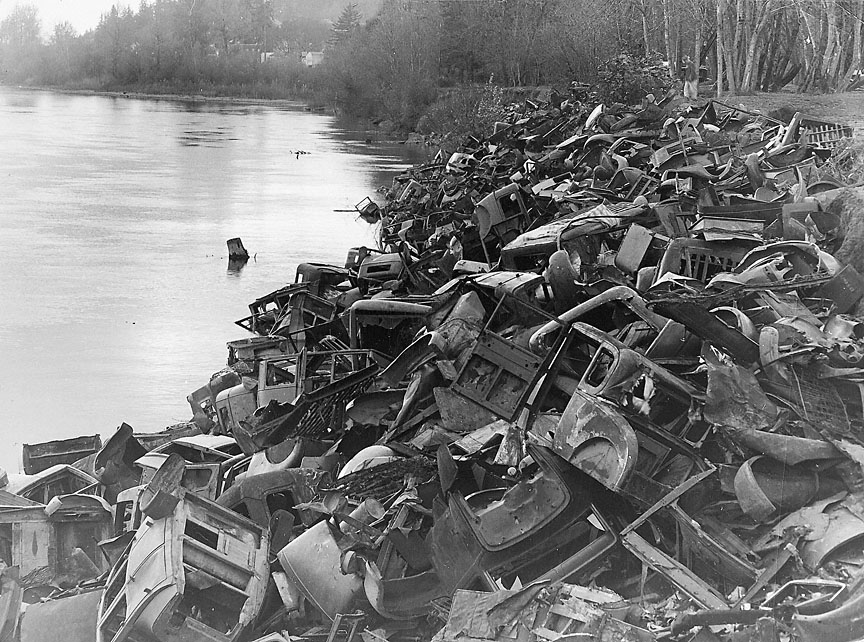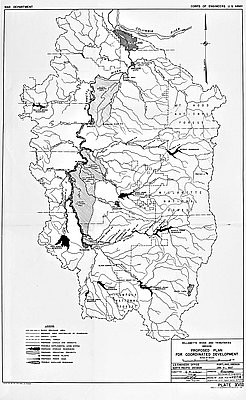- Catalog No. —
- CN 55639
- Date —
- 1939
- Era —
- 1921-1949 (Great Depression and World War II)
- Themes —
- Environment and Natural Resources, Government, Law, and Politics
- Credits —
- Oregon Historical Society
- Regions —
- Willamette Basin
- Author —
- Ben Maxwell, Oregon Journal
Rusty Automobiles, Willamette River, West Salem
The Oregon Journal published this Dec. 20, 1939 photograph, of automobiles being used to stop bank erosion on the Willamette River. Photographer and historian Ben Maxwell worked for the Journal. The photograph’s caption stated that while the government was building revetments (reinforcements made with rock and wood bulkheads) for some Polk County farmers, the owner of the pictured property had built his own with old cars.
Before Euro American settlement, the Willamette River was a complex system of braided channels that naturally migrated over time. As early as the 1870s, the U.S. Army Corps of Engineers (USACE) began making changes to the river in an attempt to alter it for commercial and social needs. To make the river safer for boats and easier to navigate, the USACE pulled snags (submerged trees and stumps), built crude dams that blocked flow into side channels, and dredged to make the channels deeper.
Because the simplified river channel caused more erosion to the river’s banks, threatening farmland and developments, the USACE then built revetments. Beginning in the 1930s, the USACE implemented the ongoing Willamette River Bank Protection Program, building roughly ninety-three miles of revetments along the 187-mile long river. The USACE also built thirteen dams in the Willamette River basin for flood control, navigation, irrigation, and power generation.
Further Reading:
Robbins, William G. “The Willamette Project of Oregon: A Study in the Political Economy of Water Resource Development,” Pacific Historical Review 47,1978: 585-605.
Written by Kathy Tucker, © Oregon Historical Society 2002.

